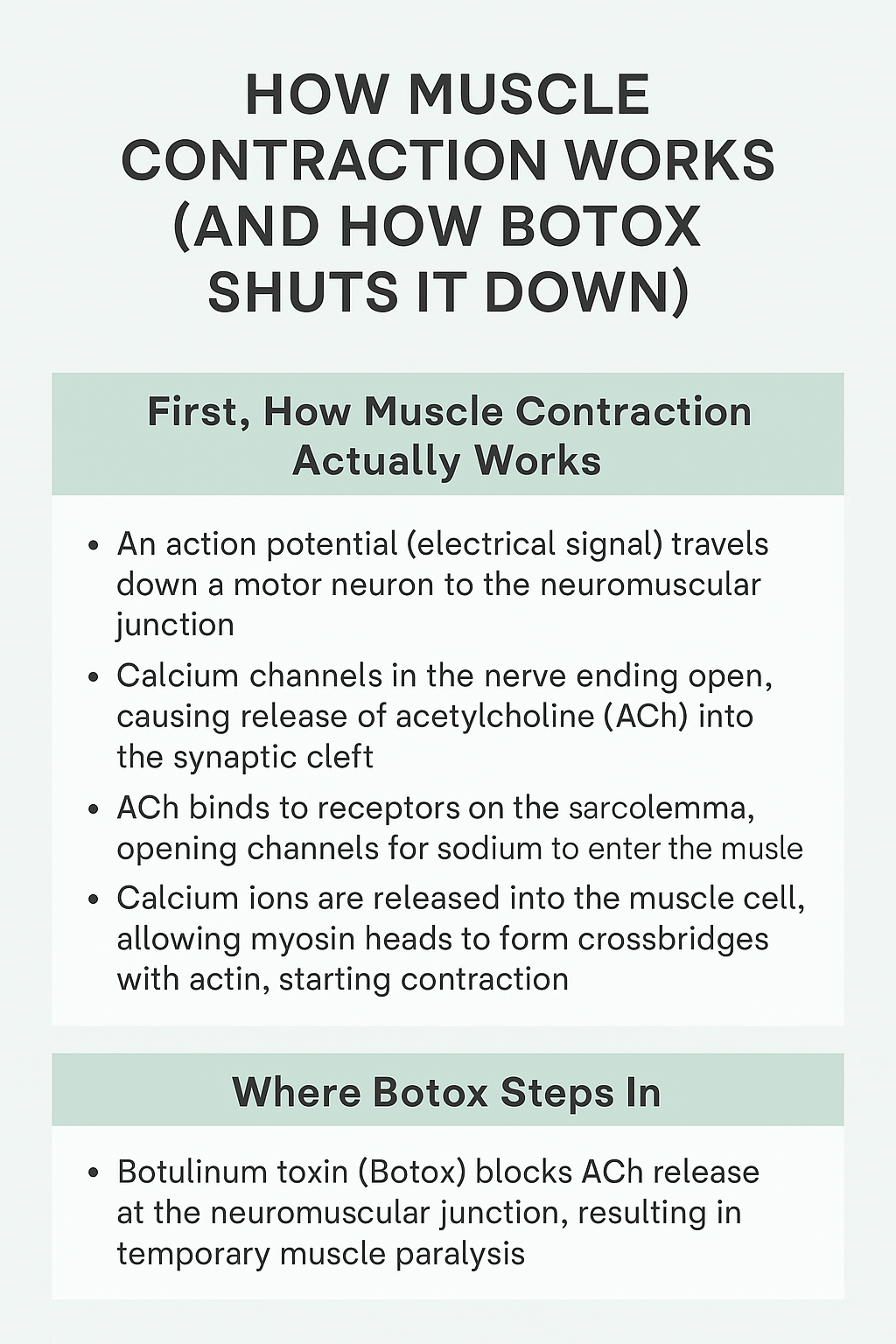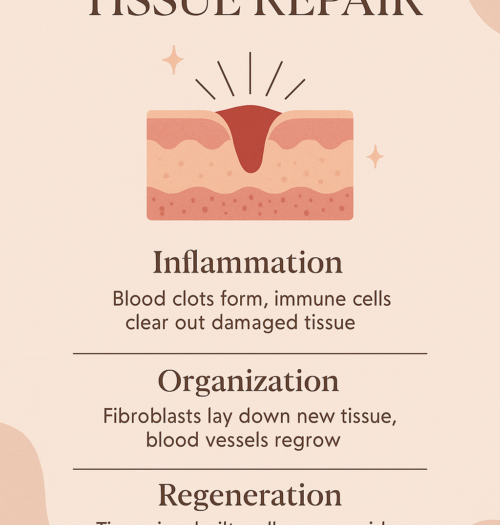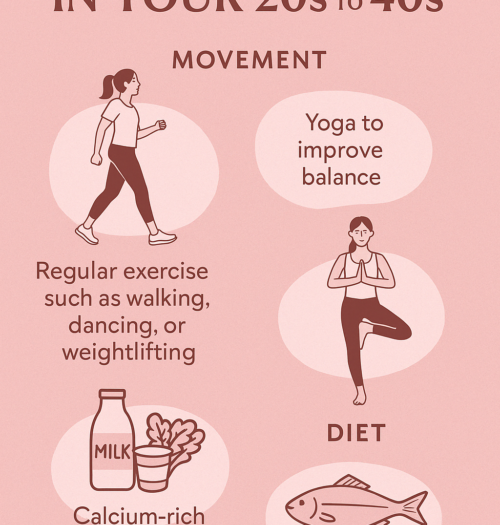
How Muscle Contraction Works (and How Botox Shuts It Down)
If you’ve ever wondered how your muscles actually move—or how Botox stops them from doing so—this one’s for you.
Let’s break it down.
First, How Muscle Contraction Actually Works
Muscle movement starts with a message from your brain. This message travels as an electrical signal, called an action potential, down a motor neuron until it reaches the neuromuscular junction (the meeting point between the nerve and the muscle).
When that signal arrives, calcium channels in the nerve ending open up, letting calcium flood in. This rush of calcium triggers the release of a neurotransmitter called acetylcholine (ACh) into the space between the nerve and muscle cell, known as the synaptic cleft.
Next, ACh binds to receptors on the muscle membrane (aka the sarcolemma), opening ion channels and letting sodium enter the muscle. That creates a new electrical signal that travels deep into the muscle along little tunnels called T-tubules, reaching the sarcoplasmic reticulum (SR)—a structure that stores calcium.
When the SR gets the message, it releases calcium into the muscle cell, which then binds to a protein called troponin. This causes another protein, tropomyosin, to shift out of the way and reveal special binding sites on actin (the thin filament of muscle). Once those sites are open, myosin heads (from the thick filament), already loaded with ATP, attach and pull on the actin—creating a crossbridge and generating the movement we call contraction.
Whew. A lot of steps just to flex your bicep, right?
Where Botox Steps In
Now—here’s where it gets interesting.
Botox (botulinum toxin) interrupts this entire process right at the beginning. It blocks the release of ACh at the neuromuscular junction. No ACh means no sodium channels open, no electrical signal travels, and absolutely no contraction occurs. The result? A temporarily paralyzed muscle.
And while botulism (which is caused by the same toxin) is very dangerous in large amounts, Botox in tiny, controlled doses has been a total game-changer in both medicine and aesthetics.
My Personal Botox Routine
I personally get Botox for a few reasons:
- “11s” (those frown lines between my brows) – mine are super pronounced!
- Masseter Botox to help with TMJ symptoms like clenching, grinding, and jaw soreness
- Forehead Botox to prevent deep-set wrinkles from forming over time
The results are seriously incredible—smooth, natural, and I still look like me, just a little more relaxed.
See below for my before/after! 👇
References
Cleveland Clinic. (n.d.). Botox (Botulinum Toxin). Retrieved April 18, 2025, from https://my.clevelandclinic.org/health/treatments/8312-botulinum-toxin-injections
Tortora, G. J., & Derrickson, B. H. (2020). Principles of Anatomy and Physiology (16th ed.). Wiley Global Education US. VitalSource eText


